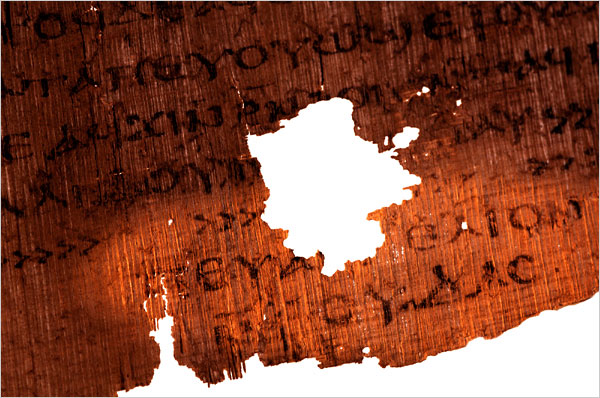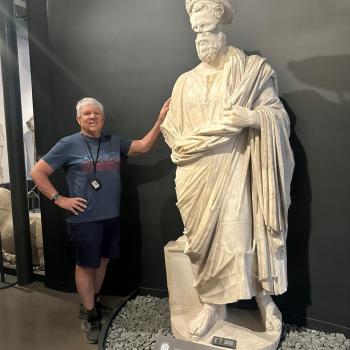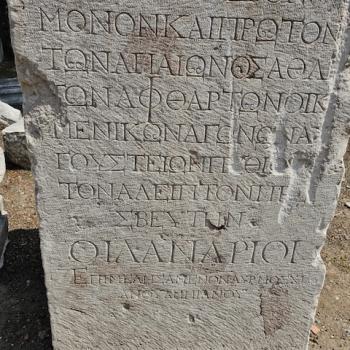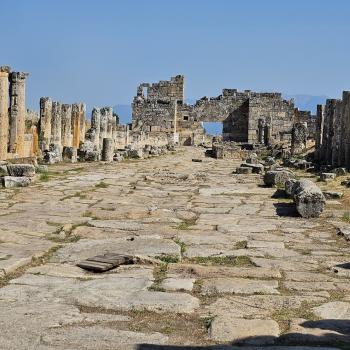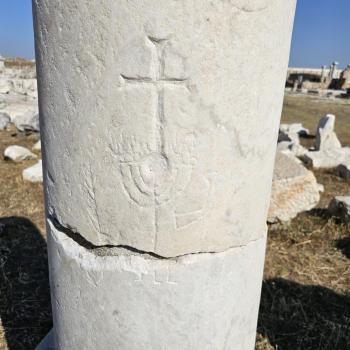by larryhurtado
In preparation for an invitational conference on early papyri coming up late next week in the USA, I read William Johnson’s excellent contribution, “The Ancient Book,” in The Oxford Handbook of Papyrology (ed. R. S. Bagnall). I first “encountered” Johnson in reading his PhD thesis, “The Literary Papyrus Roll” (Yale, 1992), and later his essential book, Bookrolls and Scribes in Oxyrhynchus (Toronto: University of Toronto Press, 2004). I regard anything by him as worth my time, to say the least, and this contribution to the Oxford Handbook of Papyrology fulfils expectations.
It’s a model of concise, fully informed, soundly-based description and analysis. He first discusses the “Bookroll” (or “scroll”), noting its supremacy as the form of the ancient book until the “codex” (leaf-book) became dominant (after the 4th century CE, and even then only progressively). Johnson is the guy on bookrolls, believe me, his 2004 book mentioned above the place to go on the subject.
Then follows a section on “The Codex” (the early form of the leaf-book as we know it). I’ve studied and written about these matters myself, and am encouraged to find that my own views largely tally with his. He notes, for example, “Coincident to the changeover from roll to codex is a shift in book content from classical literature to Christian texts” (266), and offers the “historical supposition” that “Christians appear to be instrumental in the [wholesale] adoption of the codex” (267). Against some other proposals, he judges (rightly, I think) that “early Christians deliberately adopted the different codex format for their scriptures” (267).
In the next section of his essay, “Books and their Content,” drawing on the important Leuven Database of Ancient Books, LDAB), he notes the (pagan/classical) authors and texts that seem to have been copied and circulated most frequently, somewhat similarly to my tabulation of relative numbers of extant copies of Christian texts (in Hurtado, The Earliest Christian Artifacts, 15-41). Homer (Iliad) wins by a country mile, Demosthenes a distant second, followed by the Odessy, Euripides, Hesiod, Plato, 22 authors listed in all. Interestingly, Aristotle comes last/least frequent.
Finally, in a section I found particularly informative, “Books and Society: The ‘Scholars’ of Oxyrhynchus,” he analyses the various annotations found in copies of various pagan literary texts. These include things as simple as a chi (X) in the margin, likely to mark portions regarded as particularly interesting (likely, the X from the Greek word “chrestos” = “useful”). But it is the more substantial annotations that really draw interest.
These give hints of how books circulated, how copies were made, how readers exchanged texts, likely in informal networks of like-minded individuals. But we also see hints that some readers exhibited a scholarly-type interest in noting variants in their texts, and in seeking to judge the more original readings. I found particularly informative Johnson’s discussion of how this latter work was done. From the notations, it appears that two or more copies of a given work (on rolls) were likely compared in social settings where two or more interested individuals collaborated in the comparison. We’ve often wondered how ancients made such text-critical comparison, how they coped physically with bulky rolls. Johnson seems to me to have provided the answer: It wasn’t likely done by an individual trying to consult multiple copies on rolls, but by a small circle of people, each consulting a copy and the group making comparisons and judgements collectively.
My only quibble is in Johnson’s discussion of the Christian preference for the codex, especially for texts that functioned as scriptures. Johnson there states “Only five of one hundred New Testament papyrus fragments listed in the LDAB are written on bookrolls” (266), but, to my knowledge, all of these are actually re-used rolls, none of them NT texts on fresh/unused rolls. That’s important, as we know that re-used rolls were typically copies of texts for personal/private reading, not for public/liturgical usage. So, these few copies of NT texts on re-used rolls are valuable artefacts of the personal/private reading of Christian texts, along with other copies in codex-format likely intended for reading in churches.
Johnson’s essay and the others in this volume are highly recommended.


